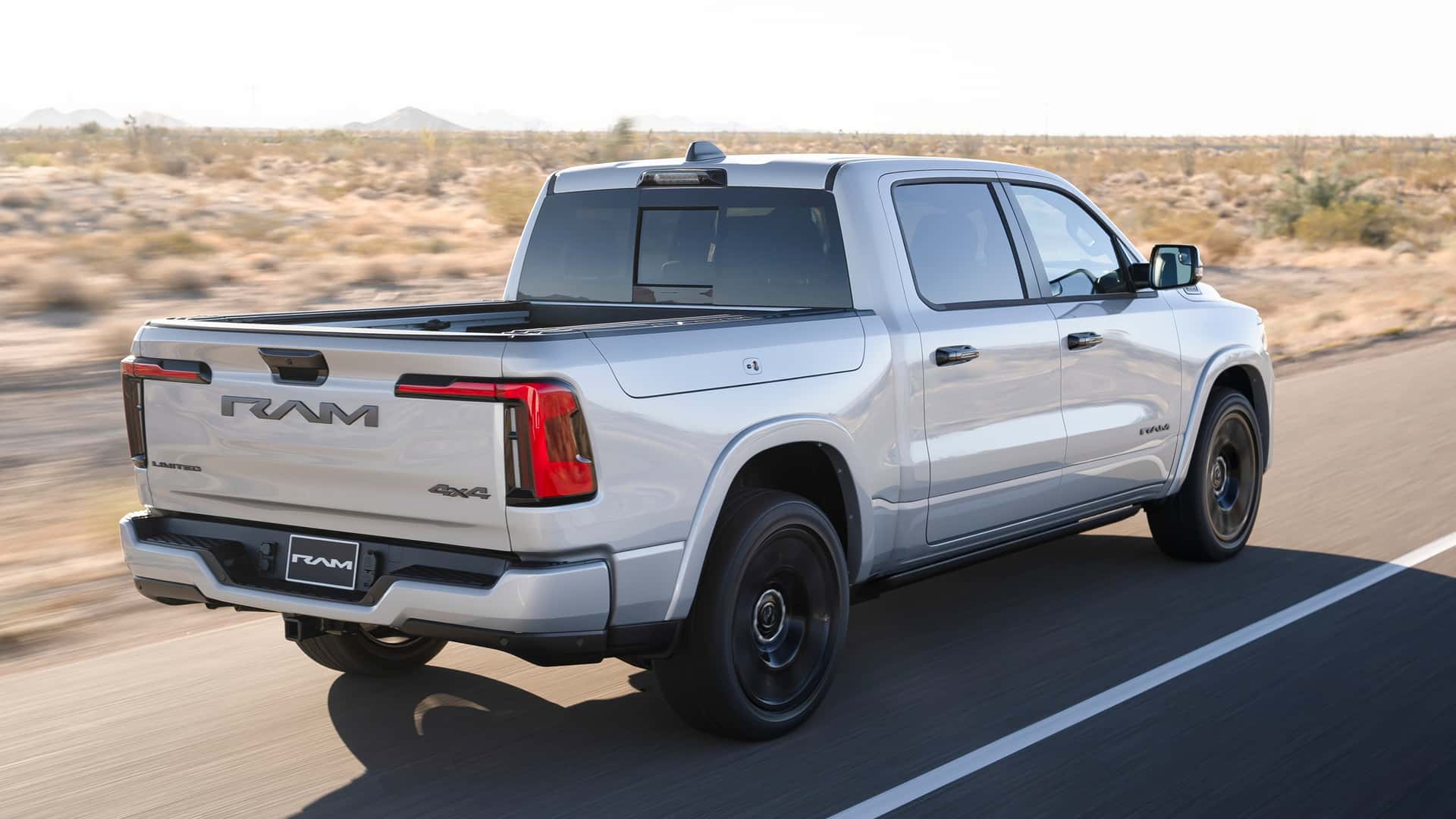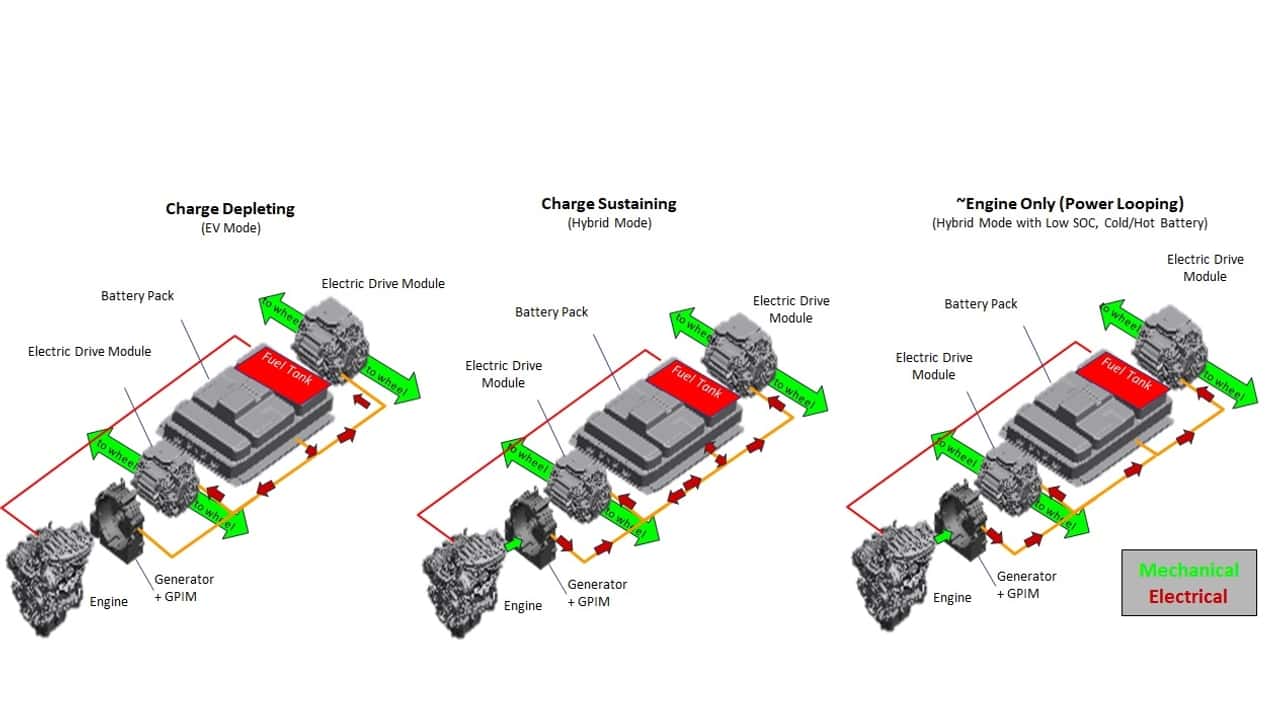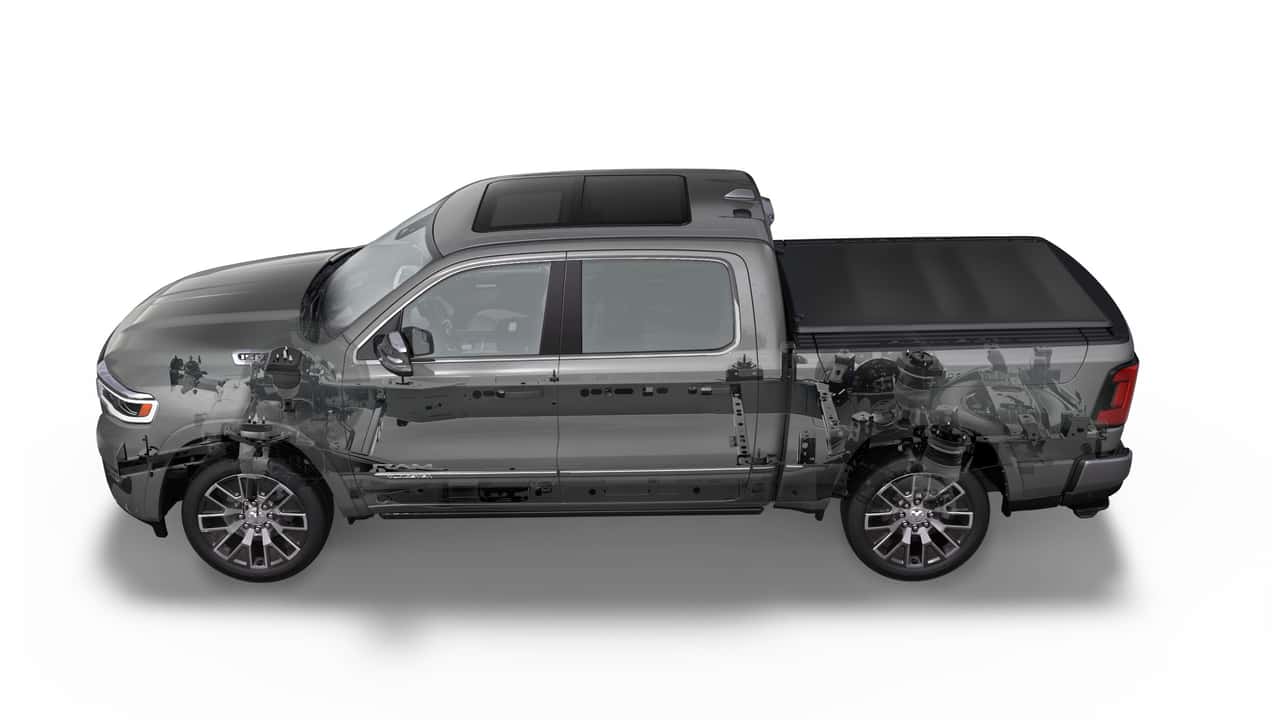Here’s Why the Ram Ramcharger's Battery Holds Less Power Than You Think

A 92 kWh battery provides 70 kWh of usable energy. By the way, this is designed for towing purposes.
- The Ram Ramcharger features a 91.8 kWh battery, though only 69.7 kWh of it are available for use.
- Ram states this is intended to ensure a uniform driving experience whether the vehicle operates using electric power or relies on its gasoline engine.
- The truck features a robust frame along with 8-lug wheel hubs, enabling it to carry heavier loads than its internal combustion engine counterpart.
I have previously criticized oversized batteries in trucks. and that includes the all-electric version of this very vehicle. When Stellantis unveiled the technical specifications of the 2026 Ram Ramcharger to journalists earlier this week, the vehicle’s 91.8 kWh battery seemed somewhat modest next to fully electric pickup trucks. What was even more peculiar was that Stellantis mentioned only 69.7 kWh would actually be available for use, leaving an excess capacity of about 22.1 kWh within the battery but not accessible. This discrepancy prompted me to investigate further as to why this might be the case.
It turns out, this feature is designed for towing. Actually, it seems that the entire Ramcharger undergoes several enhancements beneath its exterior compared to its internal combustion engine counterpart, making it a superior transporter among electric vehicle rivals. The battery is only one aspect of these improvements.
If you've operated a first-generation Chevrolet Volt, or a BMW i3 REX, If you reside in China and frequently encounter numerous Extended Range Electric Vehicles (EREV) available there, you might be acquainted with certain peculiarities of these vehicles. For instance, I previously owned a 2015 Chevrolet Volt and enjoyed my time with it; however, sometimes during intense acceleration when the vehicle had depleted all its electric power, it seemed overwhelmed. This wasn’t just about me criticizing the performance of a sluggish hybrid. Instead, it involved navigating the challenges posed by a compact engine attempting to manage multiple tasks simultaneously.
I’ll explain: Extended-range electric vehicles essentially employ a conventional internal combustion engine to enhance the capabilities of their electric drive systems. The vehicle comes equipped with a gasoline engine whose sole function is to recharge the battery rather than turn the wheels. This setup enables the car to travel significantly farther using just a compact battery.
Indeed, it might be more intricate compared to both conventional internal combustion engine vehicles and electric cars. However, with my Volt, I can travel over 300 miles using its 17.1 kWh battery (which has about 10.9 kWh available). Roughly 40 miles come directly from the battery, whereas the remaining distance relies on its 1.4-liter naturally-aspirated engine. Likewise, once the Ramcharger’s 92 kWh battery (usable capacity being 69.7 kWh) runs out, its 3.6-liter Pentastar engine kicks in to operate a 150 kW generator, ensuring the vehicle remains operational under typical conditions—a scenario often termed "charge-sustaining" mode.

Nevertheless, once the battery is depleted, the vehicle is essentially restricted to the speed at which its internal combustion engine (ICE) can maintain the battery charge level. In the case of the Volt, with an approximately 74-horsepower engine responsible for replenishing the battery during operation, this setup works well enough for brief accelerations. There is also some additional battery reserve beyond the usable capacity to ensure consistent performance while driving.
Still, sometimes during extended high-output periods, that limit may not suffice. In such cases, the vehicle’s speed will be capped at whatever rate the engine can produce power, leading to sluggish acceleration. To understand this better, consider consulting an experienced Volt owner regarding the "Propulsion Power Reduced" notification and the introduction of "mountain mode," or simply view any online footage demonstrating these limitations. Chinese EREV when it has no battery power. Acceleration times can balloon.
Stellantis has verified that their strategy involves avoiding the depletion of full battery capacity, thus maintaining a larger reserve for critical situations when it is truly necessary.

What we discovered is that once the battery level falls below 10%, the available power significantly decreases," explained Dale Jewett, a spokesperson for Stellantis Engineering. "Even with the generator running at maximum capacity, extracting more from the battery becomes challenging. Our customers desired stable performance across all levels, so we deliberately set the charge-sustain limit higher to avoid operating within the low-power zone.
When the Ramcharger launches officially, we'll need to verify these claims in real-world testing. However, according to Ram CEO Tim Kuniskis, the truck promises to offer an uncompromised approach to towing. It’s worth noting that maintaining vehicle motion does not require excessive power; thus, theoretically, the approximately 23 kWh reserve within the battery could suffice during instances where the truck utilizes its full capacity of 647 horsepower and 610 lb/ft of torque—even under tow conditions.
Kuniskis really highlighted the Goldilocks quality of the truck The Ramcharger’s battery and the company’s emphasis on an EREV directly address the current political and economic climate in the United States.
"I believe that more individuals would be inclined to opt for a BEV if it were less expensive. A few years back, we assumed that battery prices would stabilize," Kuniskis stated, alluding to the expectation that Stellantis’s battery expenses would eventually drop to approximately $50 per kWh, consequently reducing electric vehicle costs. (By the close of 2024,) They were approximately $115 per kilowatt-hour. Stellantis representatives chose not to disclose the precise cost of their batteries, but Kuniskis mentioned that the Ram’s battery capacity was designed partly with the aim of reducing expenses and making the pickup more affordable.
Theoretically, the Ramcharger appears to hold an advantage over Rivian, Chevrolet, and Ford when it comes to towing capabilities. However, we will need to wait and see how effectively it performs on actual road tests later this year.
Contact the author: Kevin.Williams@InsideEVs.com
Related Articles
- The 2026 Ram Ramcharger features a 92 kWh battery, achieves 20.5 miles per gallon, and offers 690 miles of range.
- Rams Postpones Complete EV Launch, Places Hope on Ramcharger EREV Initially
- How Does an Extended-Range Electric Car Function?
- Here's Why The Electric 2025 Ram Ramcharger Got A V6 Engine

Post a Comment for "Here’s Why the Ram Ramcharger's Battery Holds Less Power Than You Think"